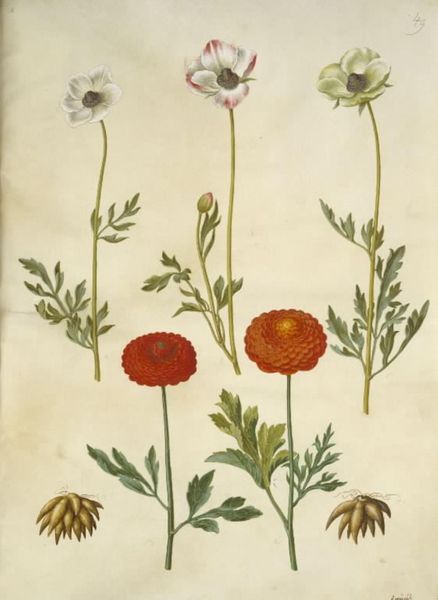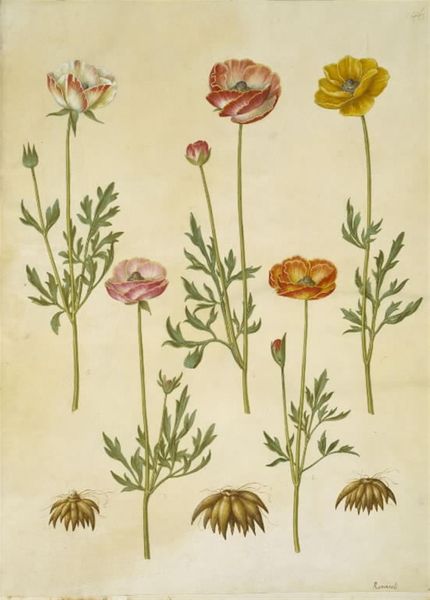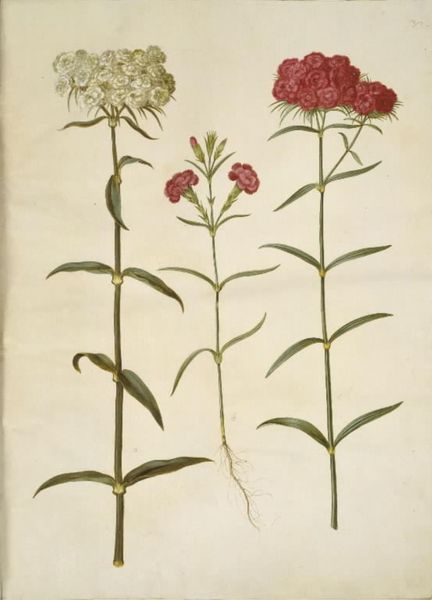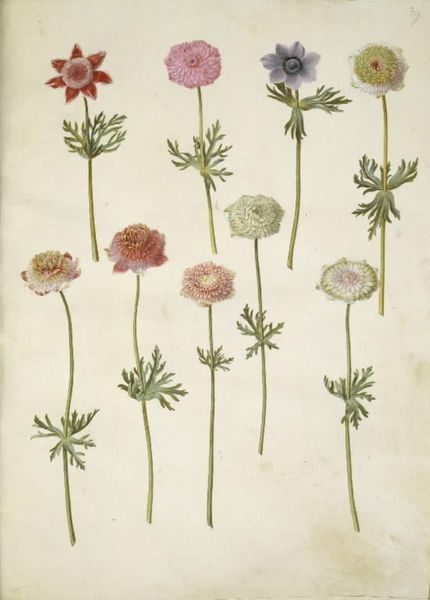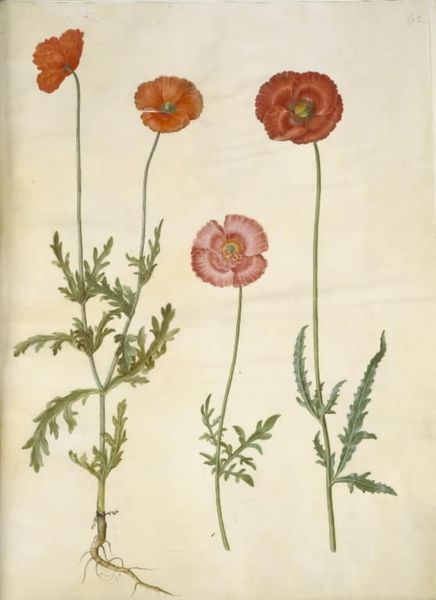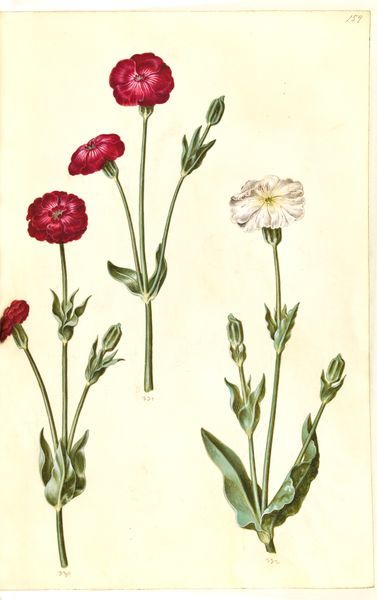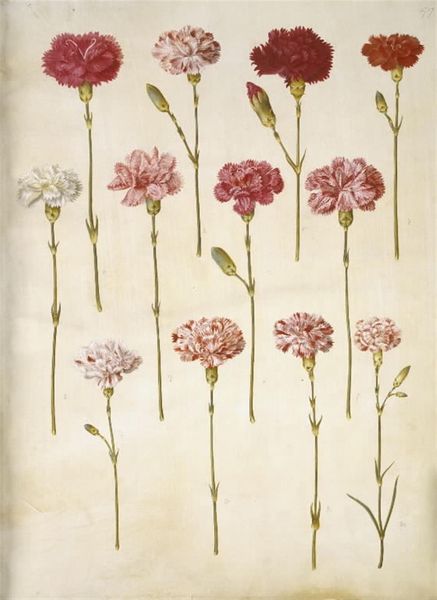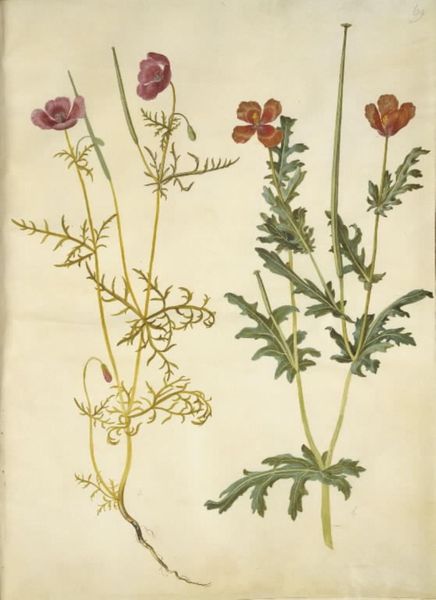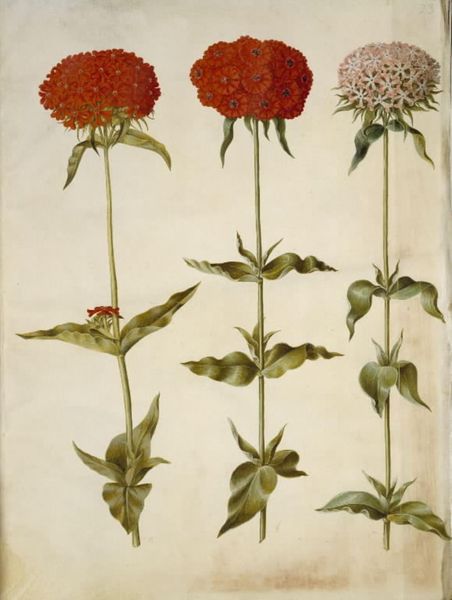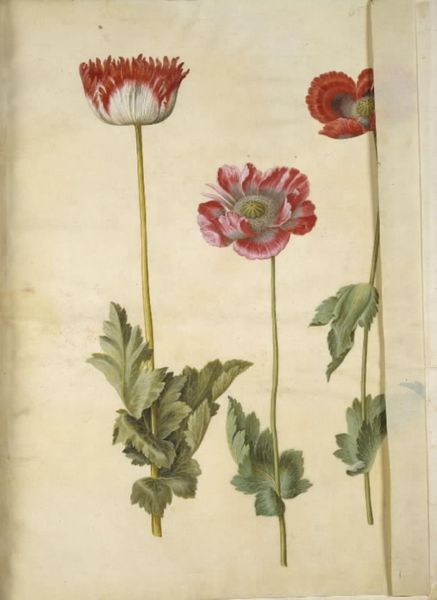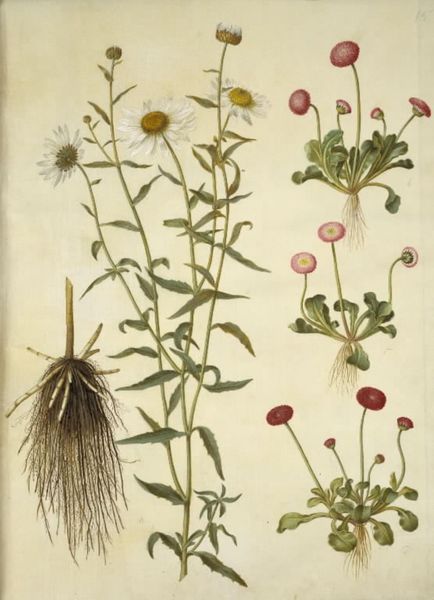
drawing, gouache, paper, watercolor
#
drawing
#
water colours
#
gouache
#
paper
#
watercolor
#
watercolour illustration
#
northern-renaissance
#
watercolor
Dimensions: 505 mm (height) x 385 mm (width) (bladmaal)
Curator: What strikes you first about this delicate floral study? I find myself captivated by its understated precision. Editor: Mmm, "understated" is spot on. For me, it's the subtle shift from red to white blooms, kinda like a flower power gradient. I feel calm looking at this, almost like flipping through an old botanical guide. What's the story here? Curator: The work before us is entitled "Silene coronaria (krone-limurt)," made between 1649 and 1659 by Hans Simon Holtzbecker. He meticulously rendered this flower, commonly known as rose campion, using watercolor and gouache on paper. Editor: Holtzbecker, you say? That sounds pretty...Germanic. And with that level of detail, he had to be European! Jokes aside, how does this fit into the bigger picture, beyond pretty flowers? Curator: Precisely! Holtzbecker was deeply embedded in the artistic and scientific milieu of his time, influenced by the Northern Renaissance interest in natural history and botanical illustration. Works like this weren’t merely decorative; they served as vital records. They played an essential part in scientific documentation as Europeans cataloged the natural world and asserted their dominion and influence over new, or recently 'discovered' parts of the world. Editor: Ah, okay, so less "art for art's sake," more "knowledge is power," then. Now those vibrant hues feel like they hold a coded message, almost screaming their name across the page. There's an assertion there. Does the color, or the flower itself, signify anything? Curator: It very well could. Rose campion has often symbolized love, both earthly and divine, while its presence in gardens served practical purposes too. Given the context of Holtzbecker's world, these drawings served to underscore a deep interrogation of human’s relationship with nature as a means of exploring the divine. Editor: You know, thinking about all the 'floral symbolism' from back then…it kind of feels like our modern emojis. Just another way to say a whole lot with a little picture. In this instance though I see this less as 'look at what Europe is discovering', and more 'Look at the absolute minutiae the divine is concerned with.' It humbles the rest of that power dynamic you mentioned a bit, dont you think? Curator: Absolutely, the nuance you observe is imperative to the study of early modern art and science. That humility makes a difference to how we view this type of imagery as it brings a complexity to discussions on empire and botanical domination. Editor: True. Holtzbecker's illustration really nudges us to reflect on our perceptions of control and, yeah, it humbles our understanding of how science and nature intertwine, even today. It's so striking. Curator: Yes, this image holds complex tensions we often miss. What a worthwhile provocation to leave our listeners with.
Comments
No comments
Be the first to comment and join the conversation on the ultimate creative platform.
